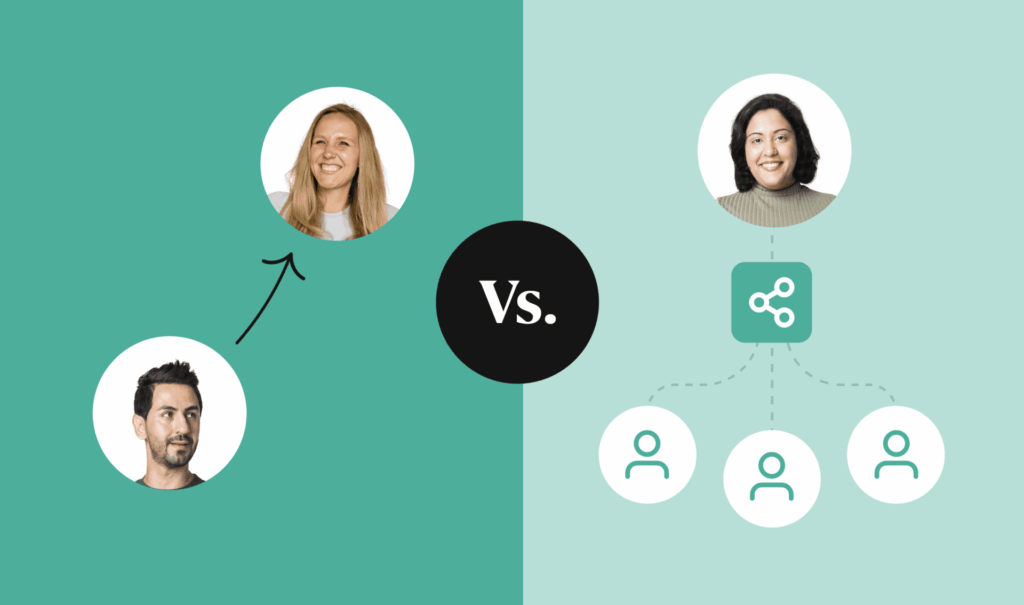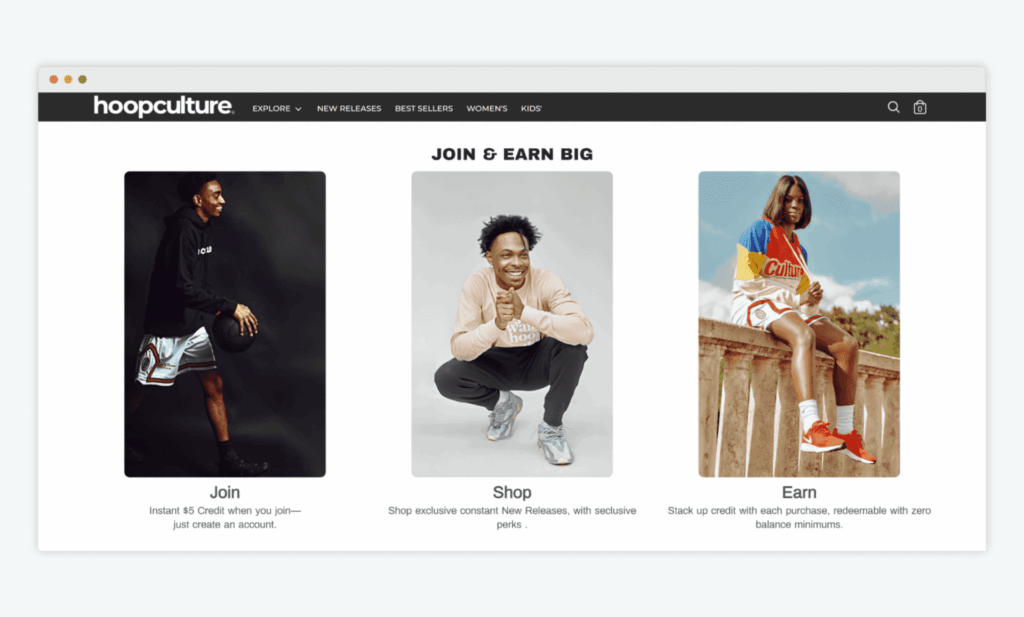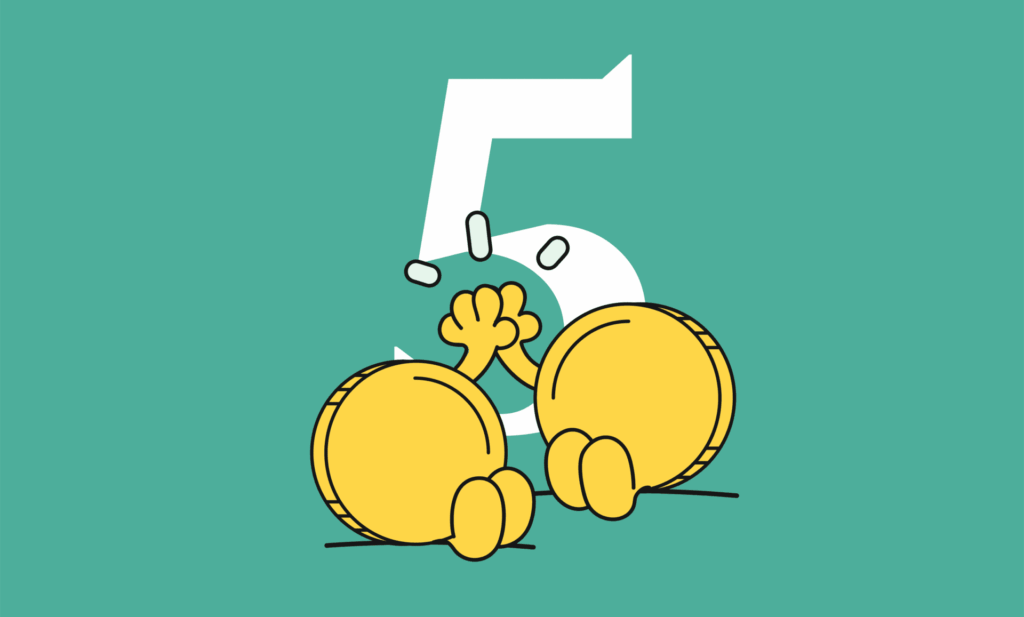In recent years, holiday campaigns have started months before the holiday season, so if you’re wondering when to start promoting yours… start now.
But if you want to go beyond holiday sales, and cultivate holiday loyalty, it’s important to plan for the season in the context of your year-round strategy. Today’s guide will give you practical actions to implement, including a secret ingredient that could set you apart for 73% of customers.
Want even more ideas? After you read this guide, check out holiday ecommerce advice from 35+ eCommerce experts here.
5 Ways to Create Profitable Holiday Loyalty Campaigns
Every company is different, so here are five efficient strategies to choose from. As long as you keep your customers’ best interest at heart, and align your strategies with company goals, even one of them can make a difference to your bottom line.
1. Promote Gift Cards
Gift cards are the most sought after holiday gift – and for good reasons:
- They’re perfect for late shoppers, when shipping presents no longer guarantees on time arrival for the holiday (and standing in long lines means they won’t have enough time to buy gifts for everyone on their lists).
- The holidays are challenging for people who don’t enjoy shopping, or find it complicated to figure out what each special person in their lives would enjoy. Buying a gift card is a great way to reduce stress, get this done quickly, and let receivers choose the perfect gifts themselves.
- Some people are just hard to buy for. Maybe it feels like they have everything already, or have a hobby you don’t know much about, or they’re known for exchanging every gift they get… but you still want to make them happy during this season. Again, buying a gift card simplifies the process.

Promoting gift cards is also a great way to leverage the holidays for long term loyalty. For example:
- To redeem the gift card, the receiver must log into your website or visit your store, and thus get exposed to a wide range of products. This might be an ideal customer who’s never heard of you before, and she might just end up buying more than the value of her gift card, especially with the shopping-encouraging holiday spirit. If she’s like the average US consumer shopping with gift cards, she might just spend $59 more, according to a study of over 2,000 US consumers.
- Either way, she’ll choose the perfect gift for herself, the one she’ll enjoy most.
- Assuming the gift meets her expectations and she gets great service, too, she’ll potentially buy again and share it with like minded friends, or post about it online, generating referrals.
- The gift card buyer will get great feedback, which will encourage her to buy additional gift cards from your store when it’s time for another holiday or special occasion.
To optimize the loyalty that this scenario can drive, check out our guide to building wildly profitable gift card programs. It’s free and doesn’t require opting in. It covers how you can differentiate your gift card, the top three gift card buyer types, and how to keep the relationship going with all three.
2. Offer Subscriptions
Subscriptions is a great example for a loyalty program that can be built all year long, then leveraged during the holiday season, or built during this season instead.
For example, if you prioritize subscriptions way before the holiday season, you can…
- Give subscribers holiday promotions before anyone else, and get your holiday campaigns results started early.
- Use this pre-campaign to test different elements of your actual holiday campaigns.
Haven’t done this yet and the holiday season is already here?
- Surprise current subscribers with better promotions than anyone else is getting.
- Promote your subscription programs – and the extra holiday love subscribers are getting – to non-subscribers. Post about it on social media, email previous non-subscriber customers, or invest in ads. You might get people to buy a subscription and extra products.
Of course, you could also promote subscriptions as holiday gifts. For example, if you have someone in your life who’s not big into cooking, wouldn’t they love a paid subscription to a meal kit program that does half or or more of the work for them?

Buying a subscription as a gift is perfect for late shoppers and, like gift cards, they have great loyalty benefits. Receiving your product on a recurring basis builds the habit of using it, making it easy to… keep using it.
3. Provide Rewards
Being able to go the extra mile in pampering your loved ones – or feeling pampered yourself while shopping for them – creates positive brand emotions that increase repeat purchases. The holiday season is the perfect time to prioritize this type of customer pampering.
On the one hand, the season is all about giving to others and receiving fun surprises. On the other hand, it can be a stressful season, especially when you’re trying to figure out what to buy for everyone and how to get all your shopping done on time – alongside increasing family commitments and end of the year pressures at work. Many of us could use some pampering during this time of year.
And it’s a great time to optimize sales and loyalty with rewards, too. Here’s how:
- Reward repeat purchases. The more customers buy, the likelier they are to buy again. Many customers need to buy more than one gift – they might as well buy all or many of them from you. Alternatively, encourage additional purchases once the holiday season ends. It could be an excuse to get themselves something, too, or it could be converted to a gift card. If their receiver likes the gift from your store, the receiver can get a reward when they come to shop for the next item from your store on their own.
- Reward referrals, Customer advocacy generates hotter leads, which trust your brand from the start. During the holiday season, everyone is shopping. Maybe both your customer and her friend need Christmas decorations. Maybe your enthusiastic car product customer can refer friends who want to step up their own car game toward the new year, or friends who are shopping for a car-loving family member. Many of us are shopping outside of our comfort zones and expertise levels during this time, so we could use all the referrals we could get.

- Go beyond discounts. Provide early access to products or rewards to get the holiday revenue coming in early. Customers can get a head start on their New Year’s goals if they buy early, or give their loved ones an extra special experience, which their own friends won’t have access to for a while. Or offer voting options on business decisions (Which new reward should you introduce this holiday season? Which product should you launch next year?), and VIP events with company employees or industry influencers. This could be fun holiday parties, workshops for choosing the best gifts or optimizing product usage, or again, getting a head start on next year’s goals. Importantly, tailor your rewards to your specific industry. Check out a few examples here.
- Reward customers who publish positive, high quality reviews about your products. Reviews build customer trust – and Google’s, too. Since people shop more during the holidays, they also Google products more and read more reviews. It’s recommended to start this campaign before the holidays, so by the time the shopping goes to the next level, your online presence is filled with positive social proof.
- Provide tiered rewards. The more they spend with you, refer others or leave high quality reviews, the more store credit or discounts they earn. Again, it’s recommended to start this early, so by the time they start their holiday shopping, they already have some initial rewards they can use and build on.
4. Give Exclusive Access to Products and Collections
If you’ve ever watched interior design videos on YouTube, you might have noticed almost everyone has the same Ikea dresser. Providing exclusive access to products increases purchase urgency while making customers feel special.
This matters even more during the holidays because:
- If there’s no urgency, potential early shoppers will leave their buying decision for “later.” That can mean they’ll end up buying from a different vendor or, if it’s a gift for themselves, skip the purchase altogether.
- Everyone can buy generic gifts. This is a simple way to help your customers’ gifts stand out.
- Many stores sell similar products. Don’t want to compete on price in a season when everyone’s lowering theirs? Differentiate yourself with unique products and experiences.
So what can you offer?
Exclusive access could be early access:
- Be the first to own this product and be a trendsetter (before everyone copies you next year).
- Give us early feedback and influence final product development. This helps your company set its product line – and bottom line – for success in the new year ahead of time, while generating some early revenue along the way.

But exclusive access could also remain exclusive:
Limited editions of collaborations with celebrities, influencers or complementing companies – or products that you develop on your own, and take your usual lines to the next level, such as extra bold colors or patterns. This is perfect for all the festivities going on during this time of year, or for the new year’s resolutions people are making to do things differently starting January 1.
While early access rewards current customer loyalty, special holiday collections introduce new buyers to your company. With excellent customer service and well-timed upsells and cross-sells, you could keep the relationship – and purchases – going well into the next year.
5. Increase Black Friday & Cyber Monday Sales
Black Friday and Cyber Monday are shopping holidays, so offering great promotions can get you many additional sales – including from customers who are new to your brand.
But how do you generate repeat purchases from them?

That’s exactly what our client, Cuts Clothing, a premium menswear brand, set out to do, so it used several of the strategies we covered above. In October 2020, it offered customers to buy products worth over $75, and get $10 in store credit.
But that store credit came with a sense of urgency – it expired at the beginning of January.
Of course, there’s plenty of time and holiday hustle between October and January, and customers could forget about their store credit, or just leave it for a “later” time, which might never come. So Cuts Clothing sent email reminders to customers to use their credit before the January deadline.
The results?
- Cut Clothing issued $13,000 worth of store credit.
- Many customers spent way more than the value of their credit – an average of 11.2x more.
- The company ended up generating $237,000 from repeat purchases alone.
For more strategies, including how to encourage existing loyal customers to buy from you during Black Friday and Cyber Monday, check out this article.
Secret Ingredient to Actually Successful Holiday Loyalty Campaigns (that No One Talks About)
Campaigns, new customers and advocates are fun topics you and us can probably talk about all day. What most people don’t like to talk about are the refunds, returns and compensation policies.
But here’s the thing, according to Fast Company:
- “$100 billion worth of product [was] expected to be returned between Thanksgiving and New Year.”
- “$90 billion worth of product will never make it back to… stores or websites – instead, it may end up in landfills.”
And there’s another important stat to consider:
- 73% of customers said “the overall returns experience impacts their likelihood to purchase from a retailer again” – UPS
These stats are from our comprehensive guide on how to dramatically reduce the cost of holiday refunds – and leverage your return experience to build loyalty instead (free, no opt-in required). To sum it up for you:
- Offer a great, easy return experience.
- Give them the option to get store credit instead of a refund.
- If they choose store credit, give them more credit than the value of their returned product.
Plus, consider sending store credit to customers who reach out for support, as a way of getting ahead of the increasing amount of support tickets. This could prevent additional refund requests, from people who would otherwise get frustrated they need to wait longer for a response than they’d like.
When our client, Dr. Squatch, a hip natural hygiene and grooming product brand for men, proactively offered store credit during the holiday season, most customers who received it spent more than the value of their store credit. The company generated $111,000 in store credit upsells.
Turn the Holiday Season to a Loyalty Season
All the strategies covered today boil down to optimizing the holiday season, while thinking beyond it. And we’ve got 38 more breakthrough ideas here. But the bottom line is: Get clear on customer needs to offer promotions that actually delight them, then overdeliver on the experience, and you’ll be singing happy songs all year long.




